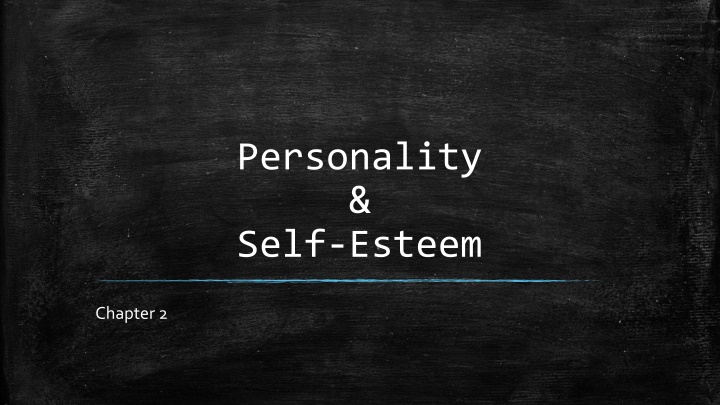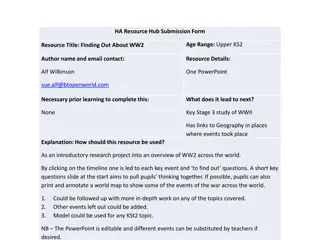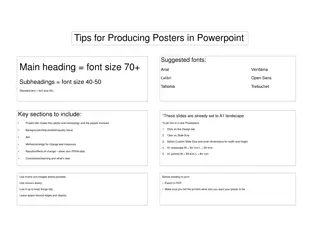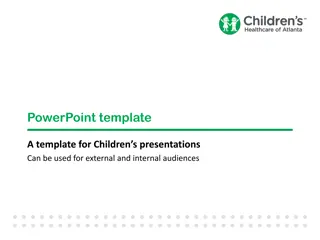Personality and Self-Esteem: Exploring Traits and Mental Health
Exploring personality traits, self-esteem, and mental health through definitions, group activities, and descriptions of extroverts, introverts, optimists, pessimists, and realists. The content covers creating lists of personality traits, identifying assertive behaviors, and outlining objectives related to mental health and personality.
Download Presentation

Please find below an Image/Link to download the presentation.
The content on the website is provided AS IS for your information and personal use only. It may not be sold, licensed, or shared on other websites without obtaining consent from the author.If you encounter any issues during the download, it is possible that the publisher has removed the file from their server.
You are allowed to download the files provided on this website for personal or commercial use, subject to the condition that they are used lawfully. All files are the property of their respective owners.
The content on the website is provided AS IS for your information and personal use only. It may not be sold, licensed, or shared on other websites without obtaining consent from the author.
E N D
Presentation Transcript
Personality & Self-Esteem Chapter 2
Get into groups of no less than 3 no more than 5
Brainstorm PERSONALITY SELF-ESTEEM List as many words under each term that help to explain each term
Create a group definition of personality & self-esteem
Create a list of as many personality traits as your group can think of
On your warm-up sheet, write 4 sentences about how someone would describe your personality
Personality & Mental Health Chapter 2 Section 1
Chapter 2.1 Personality & Mental Health Objectives: -Describe personality and identify common personality traits -Identify personality traits associated with a mentally healthy person -Identify nonthreatening ways of being assertive
Personality Consists of unique combination of traits that make you an individual Includes behaviors, attitudes, feelings and ways of thinking
Describing Personality Extroverts are friendly and outgoing Introverts are less outgoing and their thoughts are directed inward
Describing Personality Optimistsare people who focus on the positive side of things Pessimists are people who look at the negative and expect the worst Realist are people who accept a situation as it is and is prepared to deal with it accordingly.
Describing Personality Assertive people are able to stand up for themselves and express their feelings in a NONTHREATENING way Passive people hold back their feelings and will yield to others Aggressive people communicate their ideas and feelings in a forceful and THREATENING way
The Healthy Personality Psychologists are people who study the human mind and behavior Mental health is the state of being comfortable with yourself, with others and your surroundings
People who are mentally healthy are: Realistic about their strengths and weaknessness Able to take on the responsibilities of life Caring towards themselves and others Able to handle disappointment and learn from it Able to feel enjoyment and a sense of achievement Mentally healthy people tend to be friendly, optimistic, loving, assertive and strive to be the best they can
How is Personality Formed Some traits appear to be inborn while others are shaped by their environment All traits are influenced by a combination of both heredity and environment
Heredity Psychologist aren t sure which traits are influenced by heredity and which aren t Some evidence indicated that traits such as shyness and aggressiveness may be inherited as well as talents, such as musical or artistic abilities
Environment Most personality traits are modified by a person s environment Remember environment includes: Friends Family members School Culture
Environment Modeling is the copying of the behavior of others An example is a child learning to be respectful of older adults by observing their parents behavior toward the grandparents
Environment Friends who are about the same age and share similar interests are known as a peer group. Gives you a chance to learn about yourself and to get along with others
THEORIES OF PERSONALITY CHAPTER 2 SECTION 2
CHAPTER 2.2 THEORIES OF PERSONALITY Objectives: -Describe several key ideas associated with Freud s theory of personality development -Identify the ways in which advertising is targeted at teenagers
THEORIES OF PERSONALITY 3 important theories of personality were proposed by: Freud Erikson Maslow
SIGMUND FREUD Said that the personality is made up of the id, ego and the superego Id consists of biological urges such as hunger and thirst Ego is the thoughtful, decision-making part of the personality Superego is the part of the personality that judges right and wrong, your conscience
SIGMUND FREUD Stated that people s minds operate at 2 levels of thought: Conscious Thoughts Thoughts of which a person is aware Unconscious Thoughts Thoughts of which a person is not aware Forgotten childhood event
ERIK ERIKSON Believed that an individual s personality continues to be influenced by experiences beyond childhood Devised an eight-stage theory of personality development
Eriksons Eight Stages of Development Age Stage ImportantTask Birth to 18 Months Trust vs Mistrust Feeding 18m-3 years Autonomy vs Shame/Doubt PottyTraining 3-6 years Initiative vs Guilt Independence 6-12 years Industry vs Inferiority School 12-19 years Identify vs Role Confusion Adolescence Young Adulthood (20-40) Intimacy vs Isolation Love relationships Middle Adulthood (41-64) Generativity vs Stagnation Parenting Late Adulthood (65 to death) Ego Integrity vs Despair Reflections on Life
IDENTITY VERSUS ROLE CONFUSION 12-19 years Called search for identity Teen seeks sense of self and raises questions about sex, religion and their role If questions aren t answered, confusion results
ABRAHAM MASLOW American psychologist that stated that everyone has a basic drive to achieve his or her fullest potential Self-Actualization is the process by which each person strives to be all that they can be
ABRAHAM MASLOW He studied people who he believes to have attained self- actualization including: Abraham Lincoln Albert Einstein Eleanor Roosevelt Personality Traits of Self-Actualized People Realistic, Accepting, Independent, Self-sufficient, Appreciative of life, concerned about humankind, capable of loving others, fair, unprejudiced, creative, hardworking and not afraid to be different
ABRAHAM MASLOW Heirarchy of Needs is the order in which a person s needs must be met Pyramid with self-actualization on top Maslow found few people ever reach their full potential. If basic needs aren t met, the person doesn t have the energy to pursue higher needs
Self Esteem CHAPTER 2 SECTION 3
Objectives Define self-esteem and identify important influences on it Explain the link between self-esteem and health Identify ways to improve self-esteem
Self-Esteem Self-esteem is how much you like yourself and feel good about yourself What does high self-esteem look like? What does low self-esteem look like?
Self-Esteem People with high self-esteem: accept themselves for who they are have a realistic view of their strengths and weakness maintain a positive attitude even if they fail at a task
Self-Esteem People with low self-esteem: Have a negative opinion of themselves Judge themselves harshly Worry too much about what others think of them Put on an act in public and hide their insecurities Fear of failure and looking bad may prevent them from trying new things
Self-Esteem and Your Health More than any other factor, self-esteem has a direct effect on all aspects of your health- mental, social and physical Most psychologists agree that low self-esteem can contribute to many of the serious health problems affecting teens today More likely to use drugs, drop out of school, become pregnant and suffer from eating disorders
How Self-Esteem Develops Your sense of self-esteem begins to develop when you are young Kids need support and encouragement from family members to develop a sense of self-worth Need chances to succeed at small things to become able and confident individuals
How Self-Esteem Develops Self-esteem is influenced by the larger world around you including: Television Magazines Advertisements Messages about appearances, gender, cultural group and MORE
How Self-Esteem Develops Who influences your self-esteem as you get older??
Improving Self-Esteem Take inventory or your strengths and weaknesses Select friends who support and encourage you Avoid dwelling on defeat, try to find the positive from it and move on Practice good health habits Don t just go with the crowd! Set goals for yourself Avoid negative things Do something nice for others
EXPRESSING EMOTIONS Chapter 2 Section 4
6 COMMON EMOTIONS Love Anger Fear Guilt Happiness Sadness
WHEN EXPERIENCING A STRONG EMOTION Put a name to the emotion Determine what triggered it Think back to past times you felt the same way
A COPING STRATEGY is a way of dealing with an uncomfortable or unbearable feeling or situation
DEFENSE MECHANISMS are the ways people defend themselves against difficult feelings
COMMON DEFENSE MECHANISMS Compensation Making up for weaknesses in one area by excelling in another area
COMMON DEFENSE MECHANISMS Rationalization Making excuses for actions or feelings
COMMON DEFENSE MECHANISMS Denial Refusing to recognize the existence of an emotion or problem
COMMON DEFENSE MECHANISMS Reaction Formation Behaving in a way opposite to the way you re feeling























